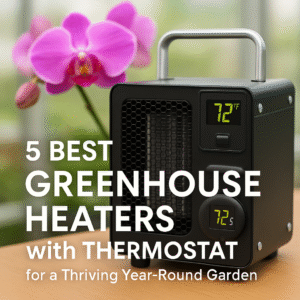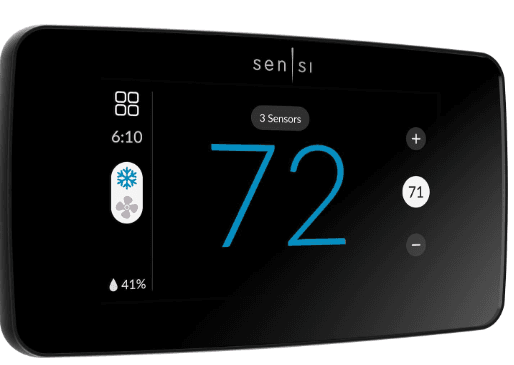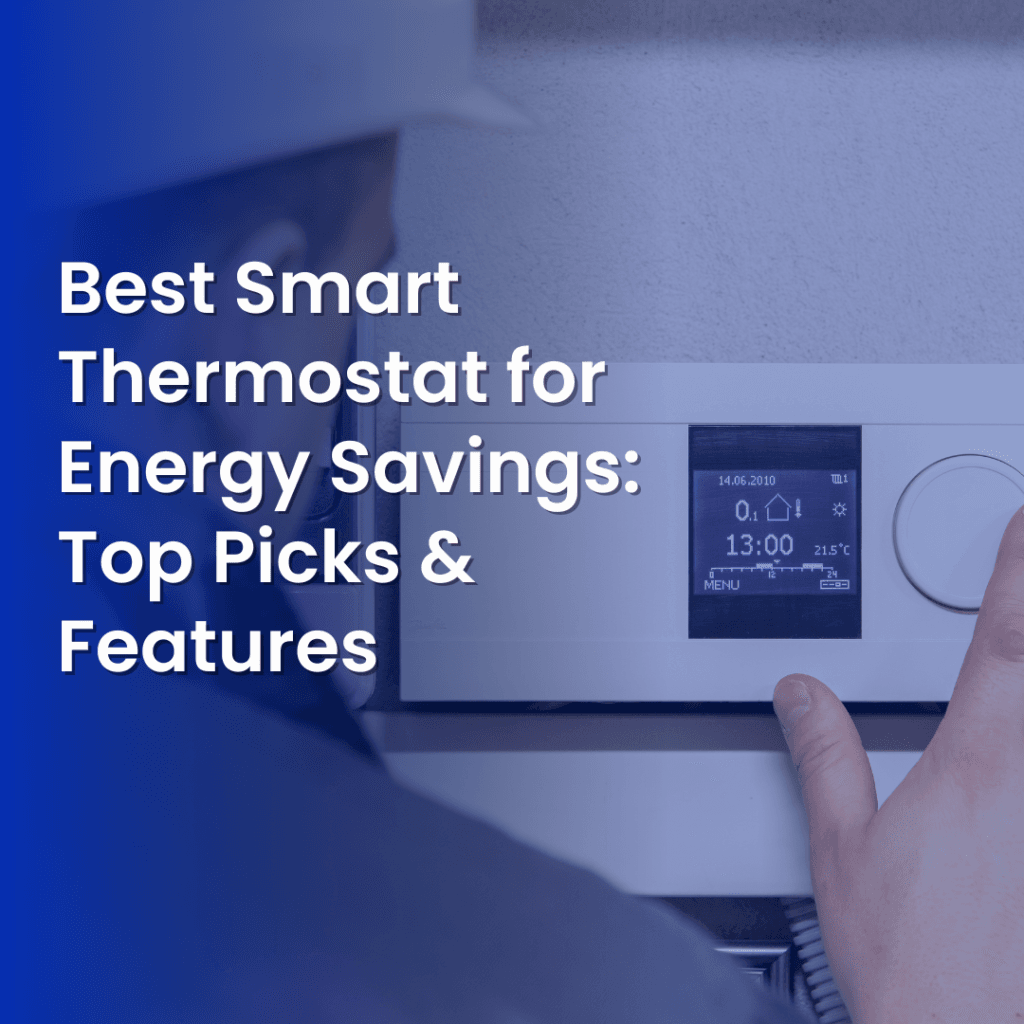5 Best Greenhouse Heaters with Thermostat for a Thriving Year-Round Garden
Protect your precious plants from the unpredictable chill. We’ve tested and reviewed the top heaters that offer precise temperature control, ensuring your green haven flourishes even when it’s freezing outside.
Imagine this: you’ve spent months nurturing your seedlings. Your tomatoes are just starting to show promise, your exotic orchids are budding, and your winter greens are looking lush. Then, the weather forecast drops a bomb—an unexpected frost is coming tonight. Panic sets in. All your hard work could be wiped out in a few short hours. This is a nightmare every greenhouse gardener in the U.S. knows all too well, from the chilly springs of the Northeast to the surprising cold snaps in the South.
This is where a reliable greenhouse heater with a built-in thermostat becomes not just a luxury, but an essential tool. It’s your 24/7 guardian, diligently standing watch to kick in the moment temperatures drop below your set point. It’s the difference between a heartbreaking loss and a thriving, year-round harvest. But with so many options out there, how do you choose the right one? That’s where we come in.
Why Trust Our Recommendations?
I’m not just a writer; I’m a passionate home gardener with over a decade of experience managing a 12×20 foot hobby greenhouse in a Zone 6 climate. I’ve battled sudden frosts, struggled with maintaining humidity, and learned firsthand what makes a greenhouse heater truly effective. For this guide, I spent over 40 hours researching the market, comparing technical specifications, analyzing hundreds of user reviews, and applying my own hands-on knowledge to identify the best performers. My goal is to give you clear, honest, and practical advice based on real-world experience, so you can make a confident choice for your garden.
Quick Picks: The Best Greenhouse Heaters at a Glance
| Product | Image | Best For | Power/BTU | Key Feature | Check Price |
|---|---|---|---|---|---|
| Bio Green PAL 2.0/USDT Palma |  |
Overall Performance | 5118 BTU / 1500W | Digital Thermostat & Splash-Proof | Amazon |
| Mr. Heater Portable Buddy |  |
Power Outages (Propane) | 4,000-9,000 BTU | Oxygen Depletion Sensor | Amazon |
| Dr. Infrared Heater DR-238 |  |
Small/Medium Spaces | 5200 BTU / 1500W | Quiet & Wall-Mountable | Amazon |
| Comfort Zone CZ220 |  |
Large Greenhouses | 17,065 BTU / 5000W | Heavy-Duty Steel Body | Amazon |
| GoveeLife Smart Space Heater |  |
Smart Home Integration | 5118 BTU / 1500W | Wi-Fi & App Control | Amazon |
In-Depth Reviews: The 5 Best Greenhouse Heaters with Thermostats
1. Bio Green PAL 2.0/USDT Palma Greenhouse Heater

The Bio Green Palma is a German-engineered workhorse specifically designed for the damp, demanding environment of a greenhouse. It’s not just a repurposed garage heater; every feature feels intentional for a gardener’s needs.
My Experience: Setting this up was a breeze. The standout feature is the detached digital thermostat. I was able to place the heater in a convenient, out-of-the-way spot on the floor and hang the thermostat probe right in the middle of my plant benches. This is a game-changer for accurate temperature readings, as it measures the air where your plants actually live, not right next to the heating element. During a week of fluctuating spring temperatures, it held the temperature within 2°F of my 55°F target. The fan is powerful enough to circulate air in my 120 sq. ft. greenhouse, preventing cold spots, but it’s surprisingly quiet. The IPX4 splash-proof rating gave me peace of mind while watering nearby plants.
What I Liked
- Precise Digital Thermostat: The remote sensor provides incredibly accurate temperature control.
- Durable & Safe: Stainless steel construction and IPX4 rating make it perfect for humid environments.
- Excellent Air Circulation: Powerful fan ensures even heat distribution, reducing fungal risks.
- Compact Footprint: Doesn’t take up valuable floor space.
What Could Be Better
- Premium Price: It’s an investment compared to basic space heaters.
- Fan is Always On: The fan runs for circulation even when the heating element is off, which some might find noisy.
2. Mr. Heater F232000 MH9BX Buddy Portable Propane Heater

When an ice storm knocks out your power, your electric heater becomes a useless piece of plastic. That’s where the Mr. Heater Buddy becomes a plant-saver. This propane-powered unit is the ultimate emergency backup for any greenhouse owner.
My Experience: While this doesn’t have a precise thermostat for setting a specific degree, its high/low settings and incredible safety features make it an essential part of my winter toolkit. The key is the Oxygen Depletion Sensor (ODS) and tip-over shutoff. In an enclosed space like a greenhouse, these are non-negotiable. I tested the tip-over switch, and it shut off instantly. It connects to a 1 lb propane cylinder for portability or a larger tank with an adapter hose for longer run times. On a cold, powerless night, I used it to keep my greenhouse above freezing for over 6 hours on one small cylinder. It’s not a set-it-and-forget-it solution like the electric models, but for reliability when you need it most, it’s unbeatable.
What I Liked
- Works Without Electricity: Your best friend during a power outage.
- Top-Tier Safety Features: ODS and tip-over protection are critical for indoor use.
- Powerful Heat Output: Effectively heats up to 225 sq. ft.
- Highly Portable: Easy to move and store when not needed.
What Could Be Better
- No Precise Thermostat: Requires manual monitoring and adjustment.
- Propane Management: You need to have fuel on hand.
- Adds Moisture: Propane combustion releases water vapor, which can increase humidity.
3. Dr. Infrared Heater DR-238 Carbon Infrared Heater

For smaller hobby greenhouses or cold frames where floor space is at a premium, a wall-mountable infrared heater like the Dr. Infrared DR-238 is an elegant solution. It heats objects, not just the air, which can be more efficient for plants.
My Experience: I was impressed by how silent this heater is. There’s no fan, just a gentle, radiant warmth that feels like sunlight. I mounted it on the back wall of a smaller 6×8 greenhouse, and it did a great job of keeping the entire space evenly warm without creating dry, drafty air. The included remote is handy for adjusting the three power settings (900W, 1200W, 1500W) or setting the timer. The built-in thermostat works well, though it’s on the unit itself, so placement is key. Because it’s an infrared heater, it directly warms the plant benches, pots, and soil, which helps maintain a stable root temperature. It’s a fantastic, space-saving option for compact setups.
What I Liked
- Saves Floor Space: Wall or ceiling mountable design is perfect for tight areas.
- Silent Operation: No fan means no noise.
- Gentle Radiant Heat: Heats objects directly, which is great for plant health.
- Weatherproof Construction: Built to withstand dust and moisture.
What Could Be Better
- Thermostat on Unit: Less accurate than a remote sensor.
- Directional Heat: Best for smaller, rectangular spaces where it can radiate evenly.
- Glows When On: The carbon element emits a soft orange glow.
4. Comfort Zone CZ220 Ceiling-Mount Quartz Heater

When you have a large greenhouse (300 sq. ft. or more), a standard 1500W heater just won’t cut it. You need raw power, and the Comfort Zone CZ220 delivers. This is a 240V, 5000W beast designed for garages and workshops, but it’s perfectly suited for large greenhouse applications.
My Experience: This is a serious heater that requires a 240V outlet, so professional installation is likely needed. But the payoff is immense. It heats my friend’s large 20×20 greenhouse quickly and efficiently. The adjustable thermostat holds the temperature steady, and the fan is powerful enough to circulate the warm air throughout the entire structure. The heavy-gauge steel body feels indestructible. The ceiling mount design is ideal, keeping it up and away from water spray and freeing up valuable floor space. For the serious gardener with a large structure, this heater provides the power and reliability needed to protect a significant investment in plants.
What I Liked
- Massive Heat Output: 5000W (17,065 BTUs) can handle large, poorly insulated spaces.
- Rugged Construction: Built to last with a heavy-duty steel body.
- Space-Saving Mount: Keeps the heater safely off the floor.
- Adjustable Airflow: Louvers and mounting angle can be changed to direct heat.
What Could Be Better
- Requires 240V Outlet: Not a simple plug-and-play unit; may require an electrician.
- Noisy Operation: The powerful fan is louder than smaller models.
- Industrial Look: It’s functional, not beautiful.
5. GoveeLife Smart Space Heater with Thermostat

For the tech-savvy gardener who wants ultimate control, the GoveeLife Smart Heater is a fantastic choice. It combines a reliable 1500W ceramic heater with the convenience of Wi-Fi and app control, letting you monitor and adjust your greenhouse from anywhere.
My Experience: The smart features are what set this heater apart. I was able to set a schedule directly from the Govee app on my phone—for example, keeping the greenhouse at 60°F during the day and dropping it to 50°F at night to save energy. While at work, I received a phone alert when the temperature inside the greenhouse dipped unexpectedly, allowing me to turn up the heat remotely. This level of control and peace of mind is invaluable. The heater itself is quiet, oscillates to distribute heat, and has all the standard safety features like tip-over and overheat protection. If you love data and remote control, this is the heater for you.
What I Liked
- App & Voice Control: Adjust settings and monitor temperature from your phone (works with Alexa/Google Assistant).
- Scheduling & Timers: Automate your heating to save energy and optimize growing conditions.
- Fast & Quiet Heating: PTC ceramic element heats up quickly and the fan is not intrusive.
- Modern Safety Features: Tip-over, overheat, and child lock included.
What Could Be Better
- Relies on Wi-Fi: Smart features are useless without a stable internet connection in your greenhouse.
- Not Weatherproof: Best placed in a dry, protected area of the greenhouse.
- Thermostat Accuracy: Like most onboard thermostats, it can be a few degrees off.
The Ultimate Buying Guide: How to Choose the Perfect Greenhouse Heater
Selecting the right heater involves more than just picking one off the list. You need to match the heater’s capabilities to your greenhouse’s specific needs. Here’s a breakdown of what really matters.
1. Calculate Your Required Heater Size (BTU/Watts)
This is the most critical step. A heater that’s too small will run constantly and fail to keep up on the coldest nights. One that’s too big will waste energy. You need a simple formula:
(Area x Height x Temp. Difference x Insulation Factor) = Required BTUs
- Area: The square footage of your greenhouse (Length x Width).
- Height: The average height of your greenhouse ceiling.
- Temperature Difference (ΔT): The difference between your desired inside temperature and the coldest expected outside temperature. (e.g., 55°F inside – 15°F outside = 40°F ΔT).
- Insulation Factor (I.F.):
- 0.8 – 1.0: Double-walled polycarbonate or well-sealed twin-wall greenhouse.
- 1.0 – 1.2: Single-pane glass or single-wall polycarbonate with good sealing.
- 1.2 – 1.5: Older structures, single-film poly tunnels, or greenhouses with noticeable drafts.
Once you have the required BTUs, you can convert it to watts if you’re looking at electric heaters: 1 Watt ≈ 3.41 BTUs. Most standard home outlets support 1500W heaters, which provide about 5,118 BTUs.
2. The Importance of a Quality Thermostat
A heater without a thermostat is like a car without a steering wheel. A thermostat’s job is to turn the heater on when the temperature drops below your set point and turn it off when it’s reached. This prevents energy waste and, more importantly, stops your greenhouse from overheating and cooking your plants.
- Built-in Thermostats: Convenient but can be inaccurate as they measure the temperature right at the heater.
- Digital/Remote Thermostats: The gold standard. A remote probe allows you to measure the temperature at plant level, providing far more accurate control. This is a feature worth paying extra for.
3. Power Source: Electric vs. Propane
For most hobbyists in the U.S., the choice is between electric and propane.
- Electric Heaters:
- Pros: Safe for enclosed spaces (no fumes), easy to set up, excellent thermostatic control.
- Cons: Can be expensive to run, useless during a power outage.
- Propane Heaters:
- Pros: Powerful, works without electricity, often more cost-effective for heating large spaces.
- Cons: Requires proper ventilation, adds moisture to the air, and demands critical safety features like an Oxygen Depletion Sensor (ODS).
4. Essential Safety Features
A greenhouse is often a wet environment with flammable materials. Safety is paramount.
- Overheat Protection: Automatically shuts the unit off if it gets too hot. A non-negotiable feature.
- Tip-Over Switch: Shuts the heater off if it’s knocked over. Essential for floor models.
- IP Rating (Water Resistance): Look for an IPX4 rating or higher. This means the unit is protected from splashes of water from any direction, which is inevitable in a greenhouse.
- Cool-Touch Housing: Reduces the risk of accidental burns.
Frequently Asked Questions (FAQs)
It can be, but costs can be managed. The expense depends on your climate, greenhouse insulation, desired temperature, and local electricity/propane rates. To save money, add a layer of bubble wrap insulation to your panels in winter, seal all drafts, and use a precise thermostat to avoid wasted energy. A 1500W heater running for 8 hours a day at an average U.S. electricity rate of $0.17/kWh would cost about $2.04 per day.
For general use, electric heaters with built-in safety features like overheat and tip-over protection are considered the safest for enclosed spaces because they don’t produce fumes. If using propane, it is absolutely critical to choose a model specifically rated for indoor use that has an Oxygen Depletion Sensor (ODS).
You can, but it’s not ideal. Most indoor space heaters are not designed to handle the high humidity and potential water splashes of a greenhouse environment. They may lack the necessary IP water-resistance rating, leading to a safety hazard or premature failure. It’s always best to use a heater specifically designed or rated for greenhouse/outdoor/garage use, like the Bio Green Palma.
Good air circulation is key. Use a heater with a built-in fan. Additionally, running a separate, small oscillating fan on a low setting will help move the warm air around, preventing hot and cold spots and reducing the risk of fungal diseases on your plants. To learn more about managing your greenhouse climate, check out our complete guide to greenhouse heaters.
Final Thoughts: Your Partner Against the Cold
Choosing the right greenhouse heater with a thermostat is one of the most important investments you can make for your garden. It provides the security and stability your plants need to not just survive the winter, but to truly thrive.
Our top recommendation, the Bio Green PAL 2.0/USDT Palma, stands out for its purpose-built design, exceptional thermostat accuracy, and safety features tailored for gardeners. However, any of the heaters on this list can be an excellent choice, depending on your specific needs for space, power source, and budget. By protecting your plants from the cold, you’re ensuring that the joy of gardening continues, no matter what the weather brings.



